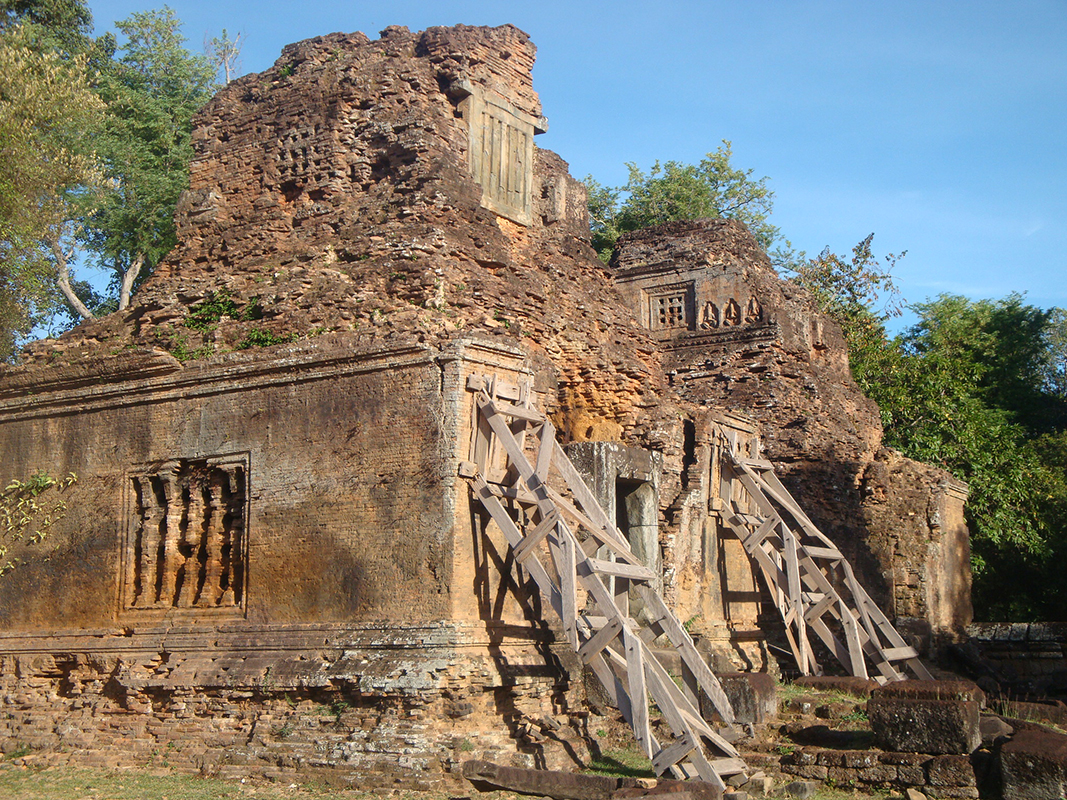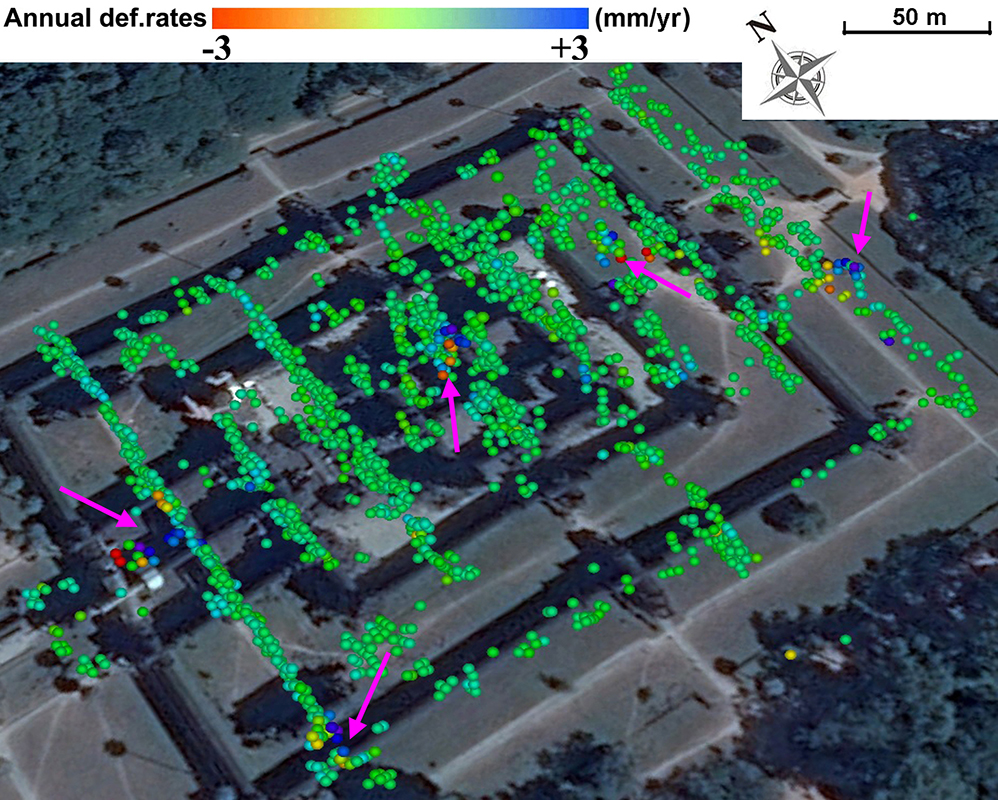Advanced Radar Tech Could Save Ancient City of Angkor's Collapsing Monuments

Cambodia's ancient stone city of Angkor is a remnant of the Khmer Empire, dating between the 9th and 15th centuries. But even stone crumbles over time, and scientists are investigating what may have led to significant degradation of the remains of Angkor's elaborate architecture.
For the first time, researchers are using radar scans together with high-resolution satellite imagery to explore how changes in groundwater — water stored in underground reserves — at the Angkor site may have caused shifts on the surface that affected the ancient buildings.
Damage is widespread in Angkor's monuments, marked by collapses, cracks and fissures in many locations. Understanding what might be weakening these structures could help experts find more effective methods for preserving and protecting ancient buildings — in Angkor and at other sites of historic importance around the world. [In Photos: Stunning Discoveries at Angkor Wat]
Erosion and growing trees that force their way into cracks have been recognized as causes of monument damage, but little is known about how demands on Angkor's groundwater may be affecting the buildings — and the impacts could be significant, scientists wrote in a new study.
The power of water
Water needs for Angkor, its resident communities and its 3 million annual visitors — up from 10,000 visitors in 1993 — have skyrocketed in recent decades, and the study authors questioned whether wells and pumps that are drawing more heavily on the region's groundwater could be weakening the integrity of the stone structures and contributing to Angkor's deterioration.
To monitor subtle deformations at the millimeter scale over large expanses of land around Angkor, the researchers turned to a type of radar called synthetic aperture radar interferometry (InSAR). They searched for evidence of movement in the monuments and in land surface in an area measuring 14 miles (22 kilometers) by 11 miles (18 km), applying readings to 45 scenes of satellite imaging.

Over a two-year period — from 2011 to 2013 — the scientists found no direct evidence linking groundwater pumping to monument damage or to an increase in instability. However, incremental changes in groundwater spanning decades could contribute to Angkor's current susceptibility to damage, the authors wrote in the study. And computer models hinted that a combination of factors working together — such as ongoing erosion of the stone architecture alongside seasonal shifts in the ground surface due to changes in the water table — could amplify known causes of degradation and increase the likelihood of collapse.
Sign up for the Live Science daily newsletter now
Get the world’s most fascinating discoveries delivered straight to your inbox.
Vulnerable to damage
Perhaps the most significant result of the InSAR scans was demonstrating their usefulness as a unique tool for safeguarding Angkor monuments — an early warning system for tracking structures that might be vulnerable to decay, the study authors reported.

Traditional conservation methods at Angkor typically relied upon observations and measurements that indicated when a structure was already damaged and susceptible to collapse. However, the new technique could detect minuscule shifts that are likely to trigger damage. By spotting them before the damage happens, InSAR could help experts act to protect vulnerable structures and perhaps prevent the stone from weakening in the first place.
More environmentally conscious conservation methods may be required to stem the tide of Angkor's decay, the study authors concluded. Moving forward, multidisciplinary analysis including geology, hydrology, remote sensing and anthropology could provide a more promising approach for preserving Angkor's historic buildings, lead author Fulong Chen, a researcher with the Institute of Remote Sensing and Digital Earth at the Chinese Academy of Sciences in Beijing, China, told Live Science in an email.
The findings were published online today (March 1) in the journal Science Advances.
Original article on Live Science.

Mindy Weisberger is an editor at Scholastic and a former Live Science channel editor and senior writer. She has reported on general science, covering climate change, paleontology, biology and space. Mindy studied film at Columbia University; prior to Live Science she produced, wrote and directed media for the American Museum of Natural History in New York City. Her videos about dinosaurs, astrophysics, biodiversity and evolution appear in museums and science centers worldwide, earning awards such as the CINE Golden Eagle and the Communicator Award of Excellence. Her writing has also appeared in Scientific American, The Washington Post and How It Works Magazine. Her book "Rise of the Zombie Bugs: The Surprising Science of Parasitic Mind Control" will be published in spring 2025 by Johns Hopkins University Press.









